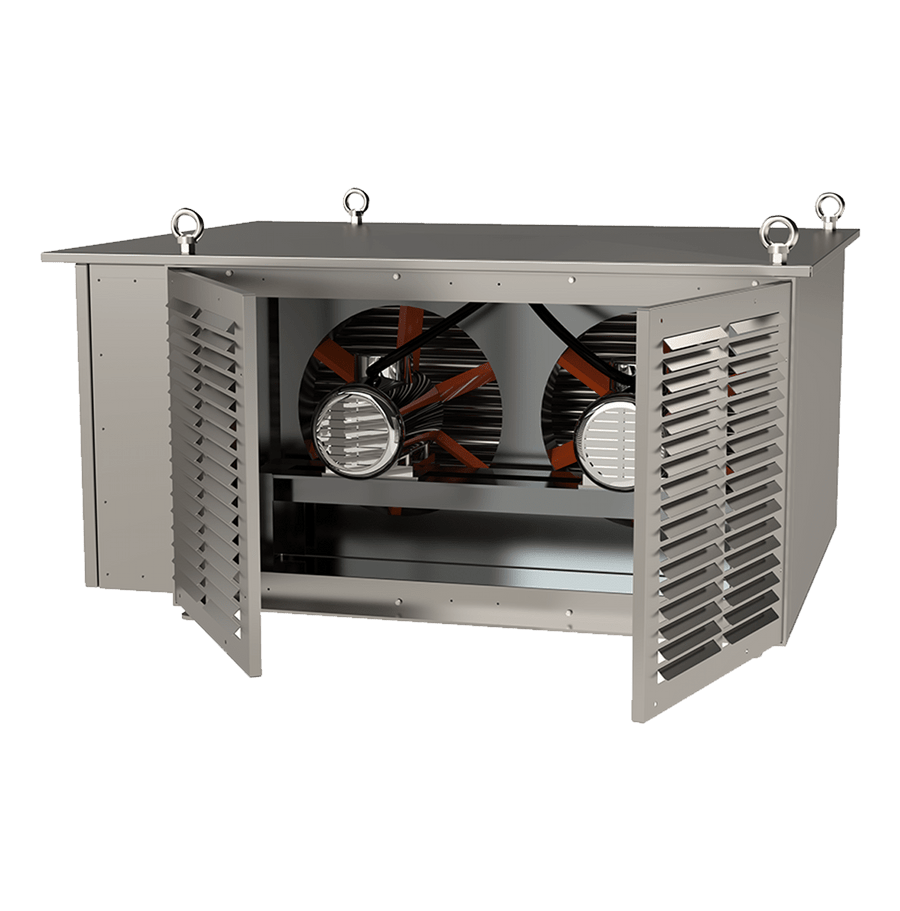Active circulation of air
While convection-cooled resistors rely on the natural flow of air, ventilator-cooled resistors employ active components like fans and blowers within their housing to actively circulate air over the heated resistor elements, enhancing their heat dissipation capabilities.
Danotherm manufactures three types of ventilator-cooled resistors:
Load Banks
These resistors are equipped with steel-grid building blocks, facilitating their division into smaller load configurations. They boast power ratings ranging from a few kilowatts to multiple megawatts and voltage ratings spanning from the low hundreds to 36 kilovolts. Load banks serve essential roles in generator and UPS testing, as well as functioning as dummy loads for generators. Designed for both indoor and outdoor use, they are available in enclosures with an IP23 protection rating.
Traction Resistors
Specifically engineered for railway systems, traction resistors are deployed in trains and substations to provide resistance for traction purposes. They find typical applications as brake resistors for charging, damping, and filtering. Power ratings typically fall within the range of 100kW to 1MW, with voltage ratings extending from a few kilovolts to 25kV. Traction resistors come in housings with protection ratings ranging from IP00 to IP23.
TRV Resistors
Ideally suited for use in challenging environments, TRV (Tough Resistor with Ventilation) resistors offer robust protection with ingress protection ratings of IP65 and IP66. Their power ratings span from 50 to 275 kilowatts, and they operate at working voltages of 800V, with an optional 1000V. TRV resistors are commonly employed as brake resistors in applications such as cranes and deck winches.












